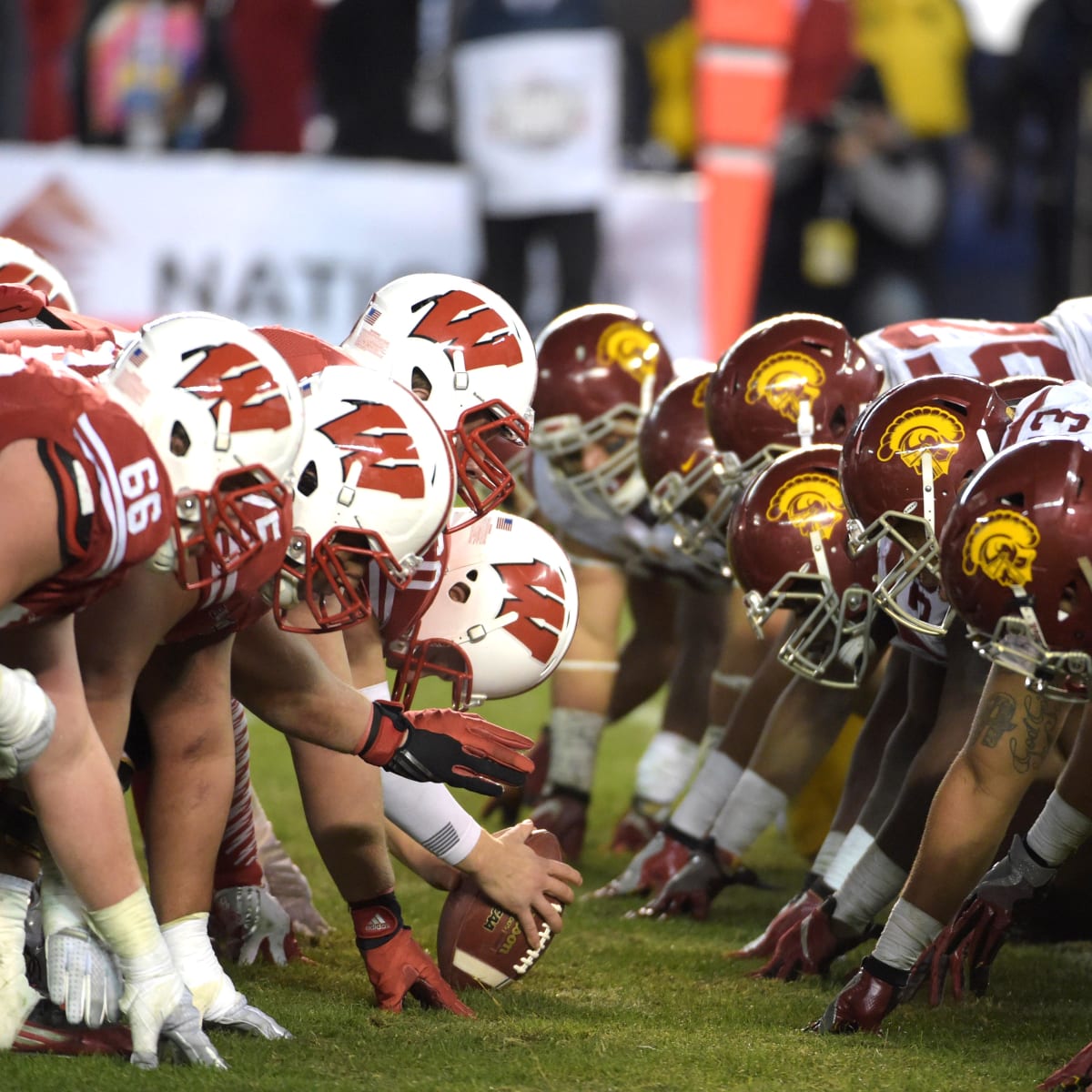
With Big Ten expansion seemingly on pause for the moment, let’s take a look at how the scheduling might work in a 16-team Big Ten. Assuming that the Big Ten will have 3 annual protected rivals for each school when USC and UCLA join, I’ve mapped out a couple of different potential matchup lineups: one more heavily based on pure geography and one with more priority to trophy games.
OPTION 1: GEOGRAPHY
Penn State – Rutgers, Maryland, Ohio State
Rutgers – Penn State, Maryland, Michigan
Maryland – Penn State, Rutgers, Michigan State
Ohio State – Michigan, Penn State, Indiana
Michigan State – Michigan, Purdue, Maryland
Michigan – Ohio State, Michigan State, Rutgers
Purdue – Indiana, Northwestern, Michigan State
Indiana – Purdue, Illinois, Ohio State
Illinois – Northwestern, Indiana, USC
Northwestern – Illinois, Purdue, UCLA
Nebraska – Iowa, Minnesota, UCLA
Wisconsin – Minnesota, Iowa, USC
Iowa – Nebraska, Minnesota, Wisconsin
Minnesota – Wisconsin, Iowa, Nebraska
USC – UCLA, Wisconsin, Illinois
UCLA – USC, Nebraska, Northwestern
Penn State – Rutgers, Maryland, Ohio State
- The one school that has 3 clear rivals in all scenarios is Penn State with Ohio State, Rutgers and Maryland. Ohio State-Penn State is now generally the most-watched Big Ten game after Michigan-Ohio State, while the league’s East Coast strategy is based on tying Penn State with Rutgers and Maryland. Notably, that means Penn State-Michigan State goes away as an annual trophy game under both setups. It is a good game, but always felt a bit forced as a rivalry for both sides and the TV networks absolutely 100% need Ohio State-Penn State to continue annually.
- In both scenarios, each school has at least one annual game with a larger brand (assuming that we can consider UCLA to be a brand name) for TV and competitive balance purposes. No one has 3 marquee games or, on the flip side, 3 games destined for Peacock.
- The Geography option took the 2 locked rivals for each school from the 11-team Big Ten era except for PSU-MSU and largely zippered matchups for multi-school states. For instance, each Illinois school plays one California and one Indiana school annually.
- The Trophy Games option would preserve or reinstate all trophy games from the “original Big Ten” era prior to Penn State joining the league. Note that this is only realistically possible if Nebraska has both USC and UCLA as annual rivals (as Nebraska-Iowa would be preserved but Nebraska-Minnesota would be eliminated).
- USC-Wisconsin seems to be the most attractive “western” annual matchup from a national perspective, so that’s in both scenarios.

